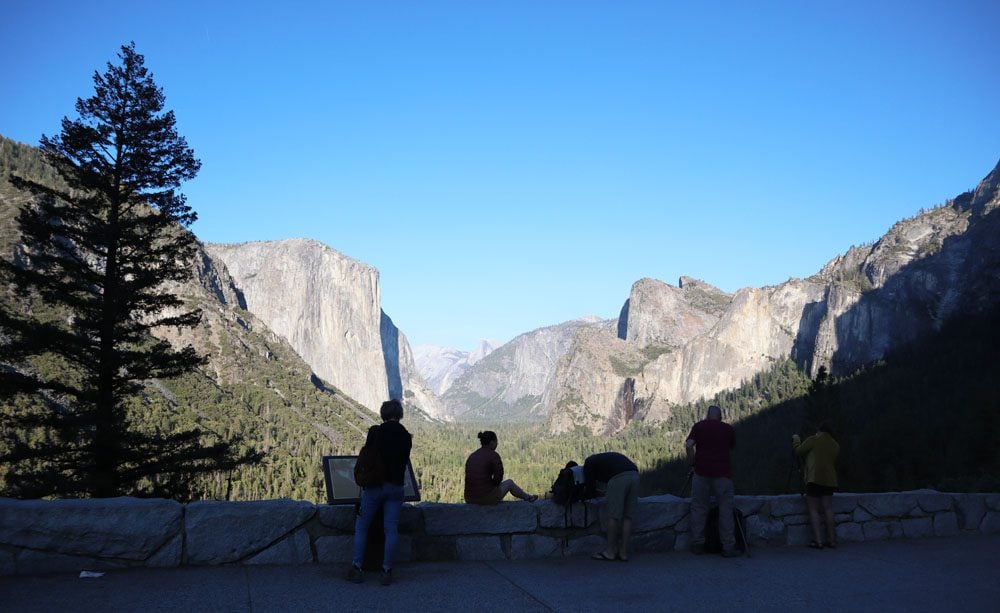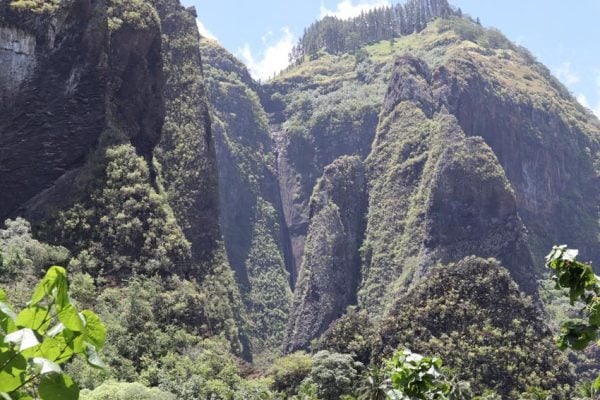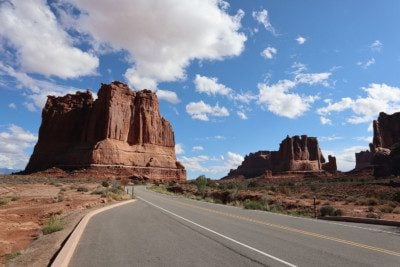2 Days In Yosemite Itinerary
Yosemite’s stunning natural beauty has been attracting visitors for over 150 years. With two days to spend in one of America’s most popular national parks, you have the opportunity to get off the beaten track and get away from the crowds. In this two days in Yosemite itinerary, we’ll maximize the short visit by focusing on the park’s main highlights along with optional superb hikes.
I first visited Yosemite on a family trip back in the mid-90s and recently returned to thoroughly explore the national park. I spent five days driving and hiking in Yosemite as part of a long road trip in the American Southwest. This two days in Yosemite itinerary is based on extensive research and experience.
Why Visit Yosemite?
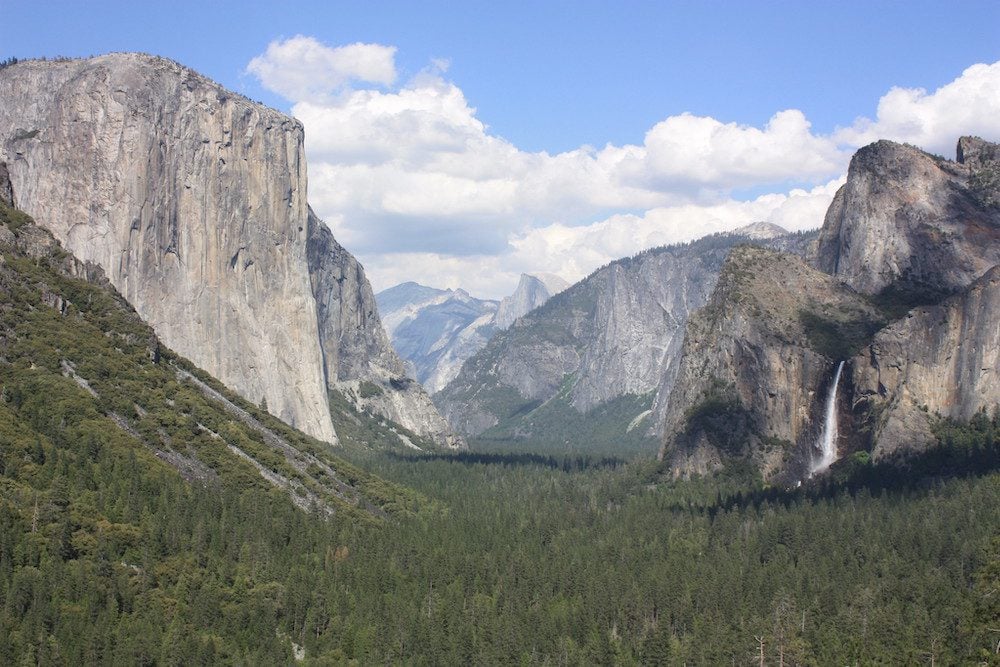
One of the world’s most dramatic natural landscapes, Yosemite Valley is striking from every angle and at every hour of the day. The valley’s grassy meadow appears detached from the outside world by tall granite cliffs, some of which are tearing with waterfalls.
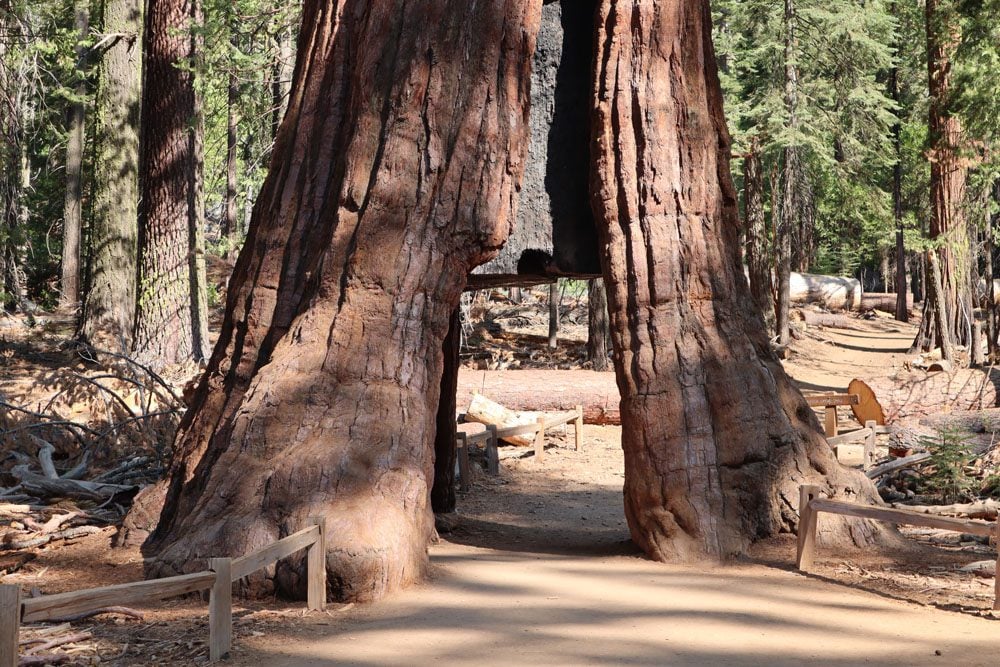
At the edges of the national park, groves of giant sequoia trees have been aiming for the sky for thousands of years. Walking amongst these ancient giants helps to put life in perspective.
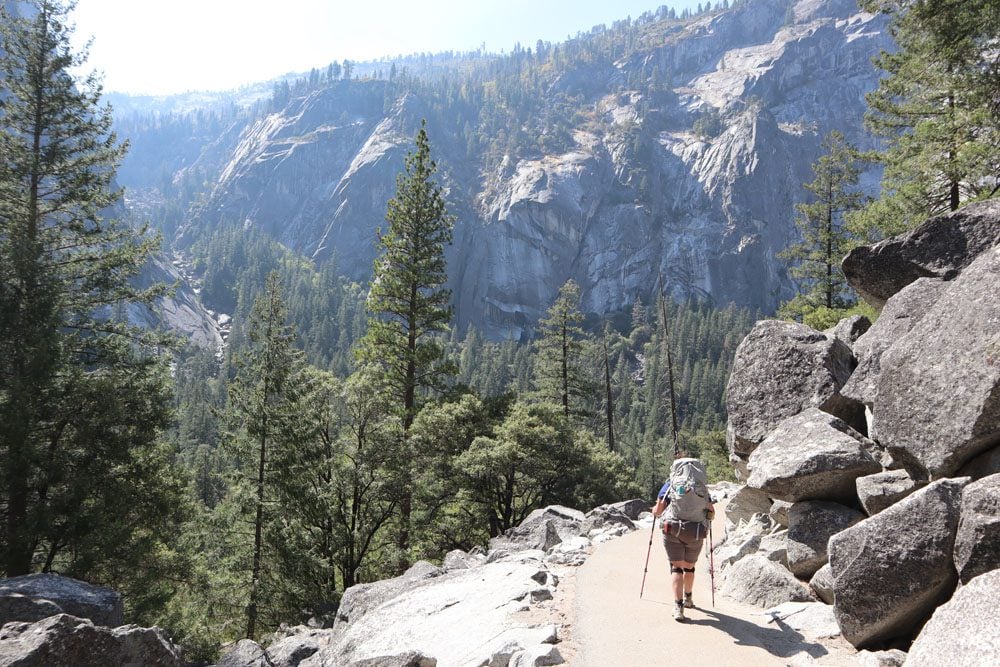
Over 800 miles of hiking trails beckon visitors to put on their outdoor shoes and explore Yosemite on foot. The vast network of trails will bring you to just about every point in the park. Unlock hiking opportunities when overnighting in Yosemite.
Additional Yosemite Resources
Check out the Yosemite travel guide collection for additional information, including essential Yosemite planning tips, the best hikes, and top things to do.
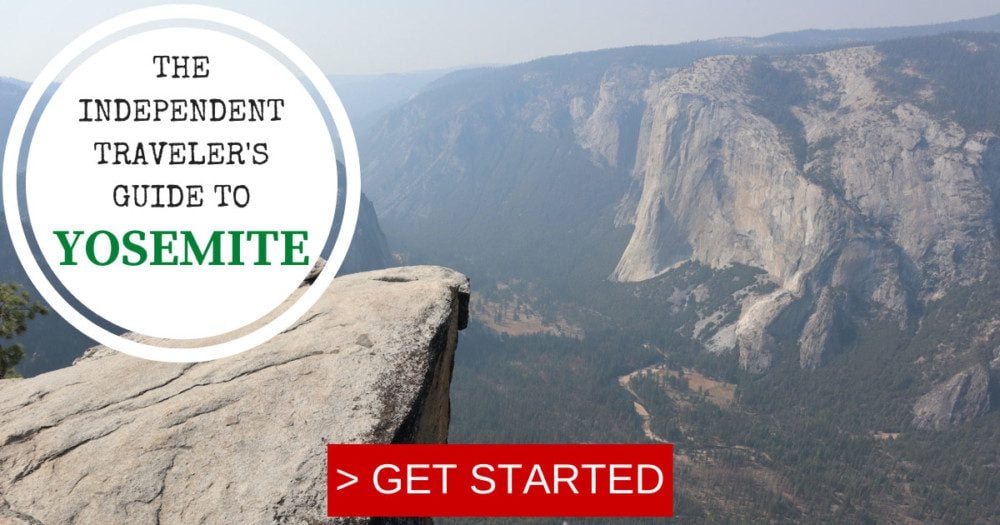
This two days in Yosemite itinerary is split into two sections:
- Day 1: Yosemite Valley
- Day 2: Hiking options, Sequoia groves & Glacier Point
Rising to a height of 8,842 feet (2,695 m) and 5,000 feet purely from the floor of Yosemite Valley, smooth and curved Half Dome is Yosemite’s most iconic peak. If you have two days to spend in Yosemite, it is possible to hike to the summit of Half Dome if you have secured a permit. Keep mind that this achievement unlocked will not leave any time for exploring the park other than quick stops at roadside viewpoints.
Yosemite Travel Guide Video
Here’s a video showcasing Yosemite’s top highlights.
Where to Stay in Yosemite?
To maximize the sightseeing and reduce long driving times getting into and out of the park, it’s best to overnight inside Yosemite National Park. That said, camping and lodging inside the national park come at a steep premium and require advanced reservation if visiting during peak times.
For a comfortable hotel stay, Yosemite Valley’s historic and luxurious Ahwahnee is the top option along with the historic Wawona Hotel, on the southern Mariposa Grove side.

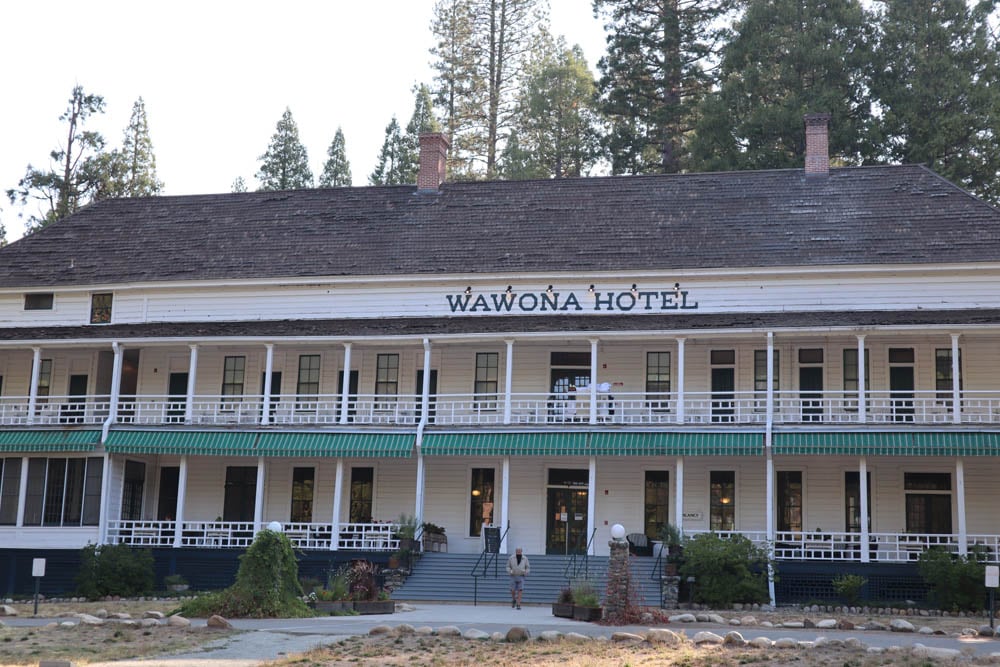
Yosemite Valley also has a few lodges and campgrounds. The popular lodge-type options are the upscale Yosemite Valley Lodge, the large Curry Village with its signature basic cabins and tents, and the comfortable Housekeeping Camp. There are also a number of campgrounds in Yosemite Valley, some of which operate on a first-come, first-served basis. From April through October, reservations at campgrounds can be very difficult to obtain and the first-come, first-served campgrounds often fill up early each day.
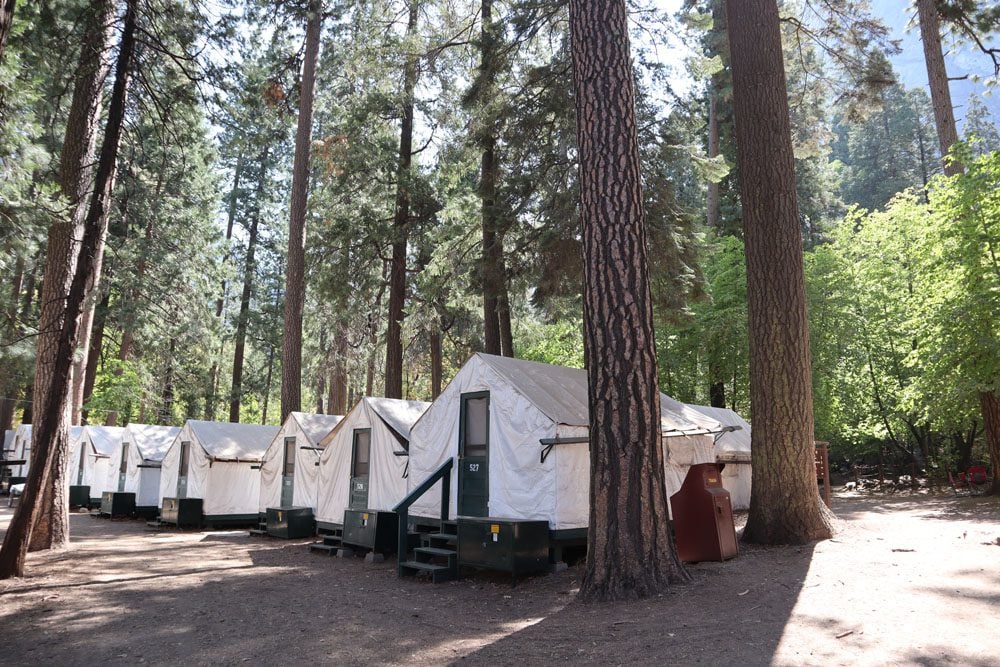
If no suitable accommodations can be found inside the park, check nearby options outside Yosemite (see all options here). Towns such as Groveland and Buck Meadows are near the western entrance to Yosemite, relatively close to Yosemite Valley, as is El Portal, close to the western entrance. Near the southern entrance, search for places in and around Wawona.
Two Days In Yosemite Itinerary Map
All places mentioned in this two days in Yosemite itinerary can be found on this companion map. Simply click on the image to open it in Google Maps.
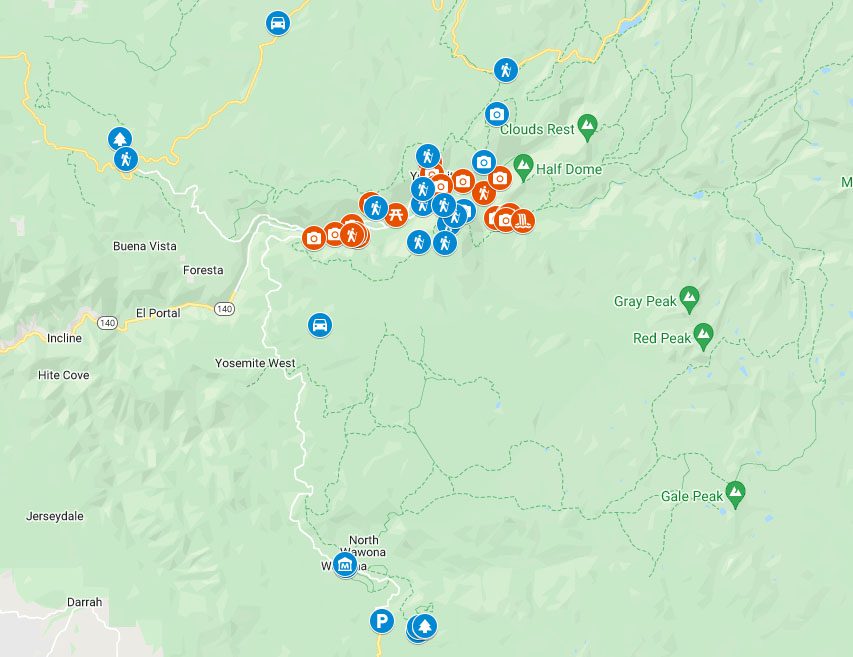
Day 1: Yosemite Valley
The first of these two days in Yosemite is dedicated to Yosemite Valley, the national park’s main attraction. The valley is just seven miles long and one mile across at its widest point, but in this tight space, visitors are treated to a concentration of natural highlights rarely seen anywhere else. The valley’s main icons are its granite cliffs, some of which rise to a height of over 3,000 feet (900 m) and some of which are tearing with waterfalls that can be seen from afar.

Mist Trail to Vernal & Nevada Falls
Get an early start to the day and embark on one of the best hikes in Yosemite. The six-mile hike to Vernal and Nevada Falls via the Mist Trail is difficult and will take approx 3.5 hours to complete, but you can also just hike to Vernal Fall Bridge and head back to the valley floor (0.8 miles | 1.3 km).
Unlike Bridalveil and Yosemite Falls, Vernal and Nevada Falls remain active throughout the year.
Take the free Yosemite Valley shuttle or park near the trailhead if you’ve arrived early. The first leg of the hike is uphill on a paved path that offers great views of Merced Creek at every turn. At Vernal Fall Bridge, catch the first glimpse of Vernal Fall (317 feet). If the Mist Trail is open, follow the hundreds of steps to the top of Vernal Fall and enjoy the first rays of sunshine piercing through the spray of water, often creating rainbows. If it’s a nice day, the Emerald Pool will radiate under the sun (swimming is prohibited).

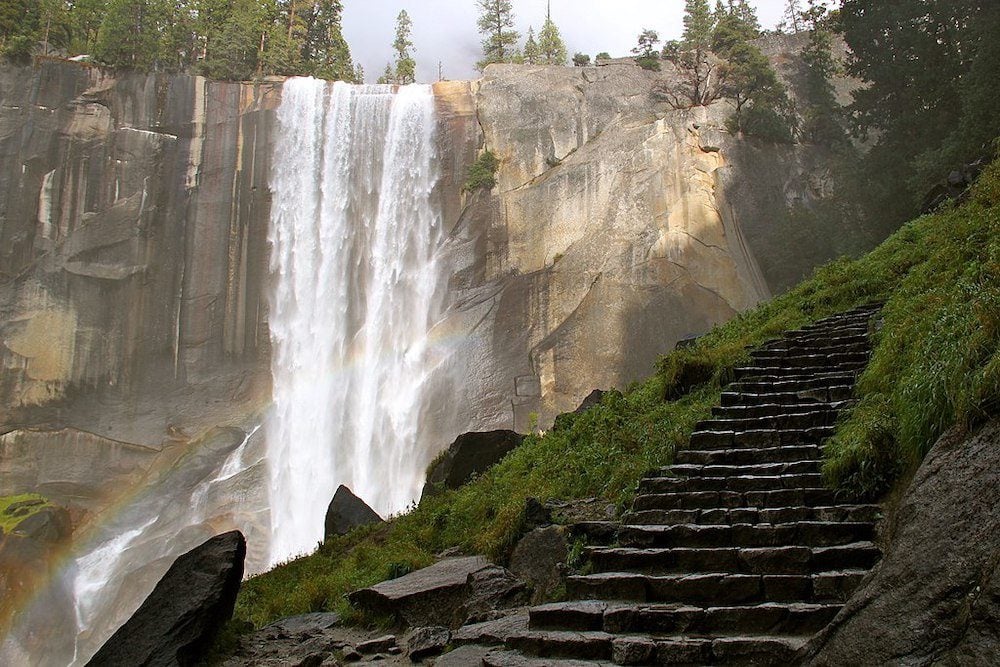
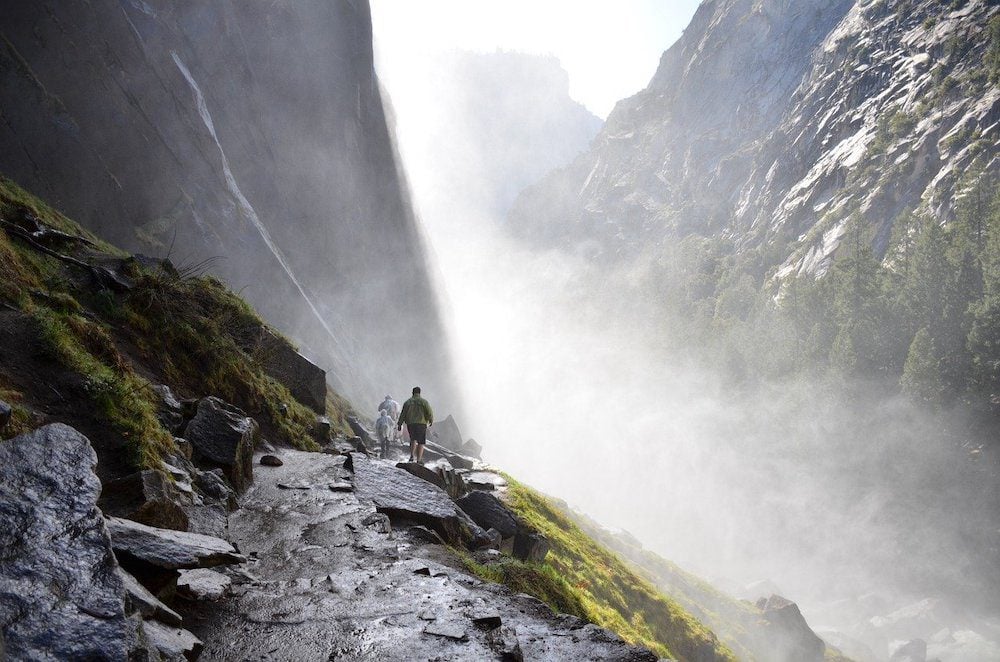
From Vernal Fall, take the shortcut to scenic Clark Point, from where you’ll catch nice views of Half Dome and Nevada Fall in the distance. From here, head back to the trailhead via the John Muir Trail or push forward to Nevada Fall.
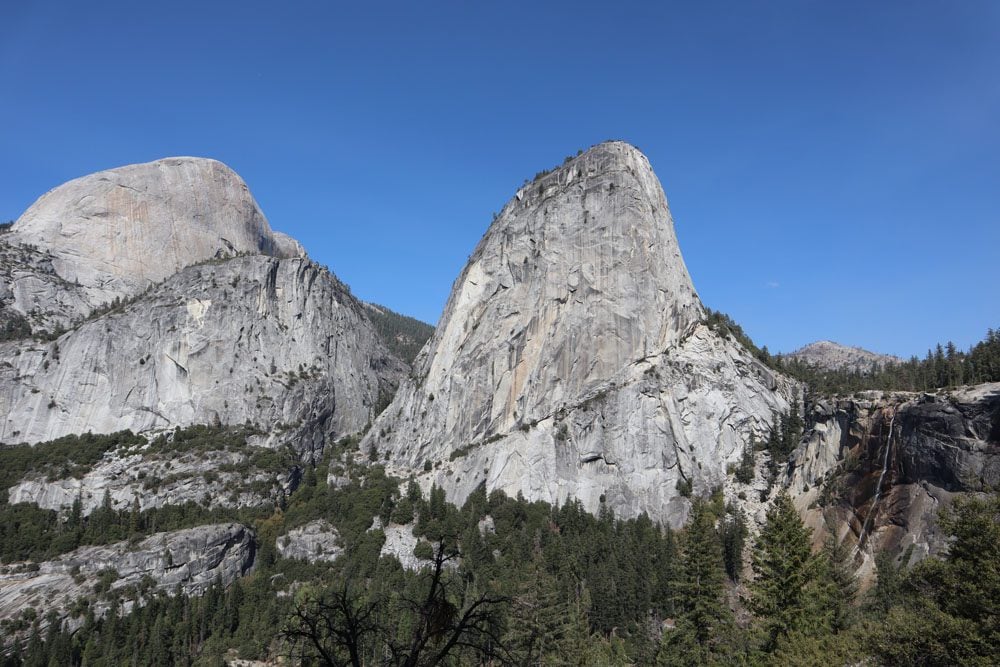
You can also simply continue from Vernal Fall on the Mist Trail to Nevada Fall (594 feet). This spot is simply out of this world, resembling a small oasis sheltered by the surrounding peaks. This is a great spot for a picnic lunch. From Nevada Fall, hikers with permits push further towards Half Dome but you’ll head back on either the Mist Trail or the John Muir Trail if you want to see something a bit different on the way down.
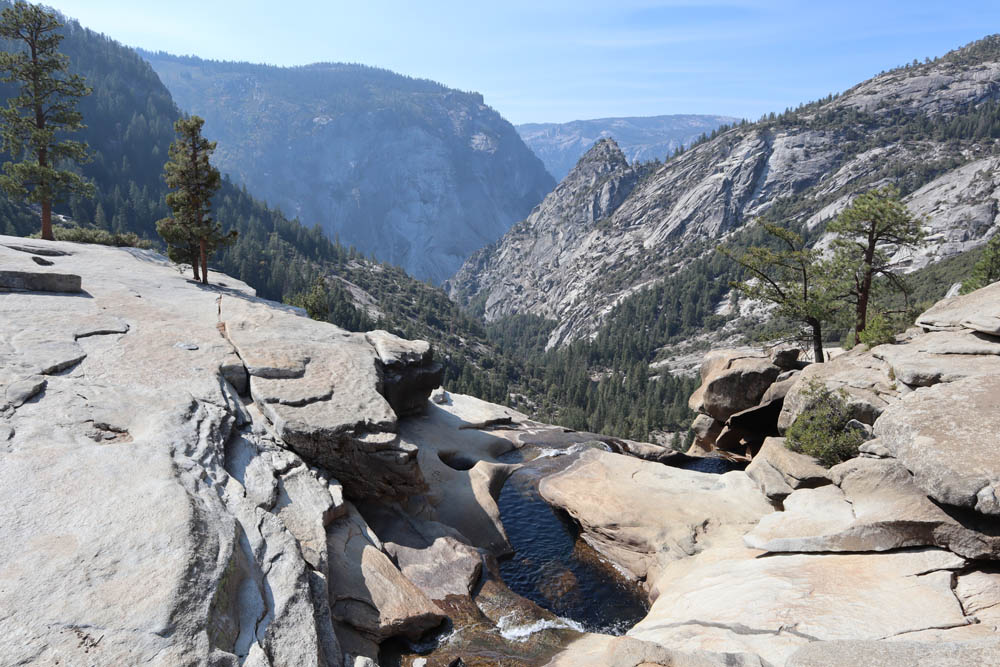
If completing the hike to Vernal and Nevada Falls is out of your scope, try hiking to just Vernal Fall Bridge. Afterward, head back to the valley floor and walk to Mirror Lake if it’s spring or early summer. When Mirror Lake is not dry, visitors are rewarded with a beautiful reflection of Half Dome on the calm surface of the water.
The Ahwahnee Hotel
At Yosemite Village, stop for lunch if you haven’t had any on the hike but don’t forget to walk or drive to the historic Ahwahnee Hotel. Opened in 1927, see how the structure blends into its surroundings with wood and rock on the exterior, and then head inside to see the exquisite interior decor, inspired by Native American motifs.
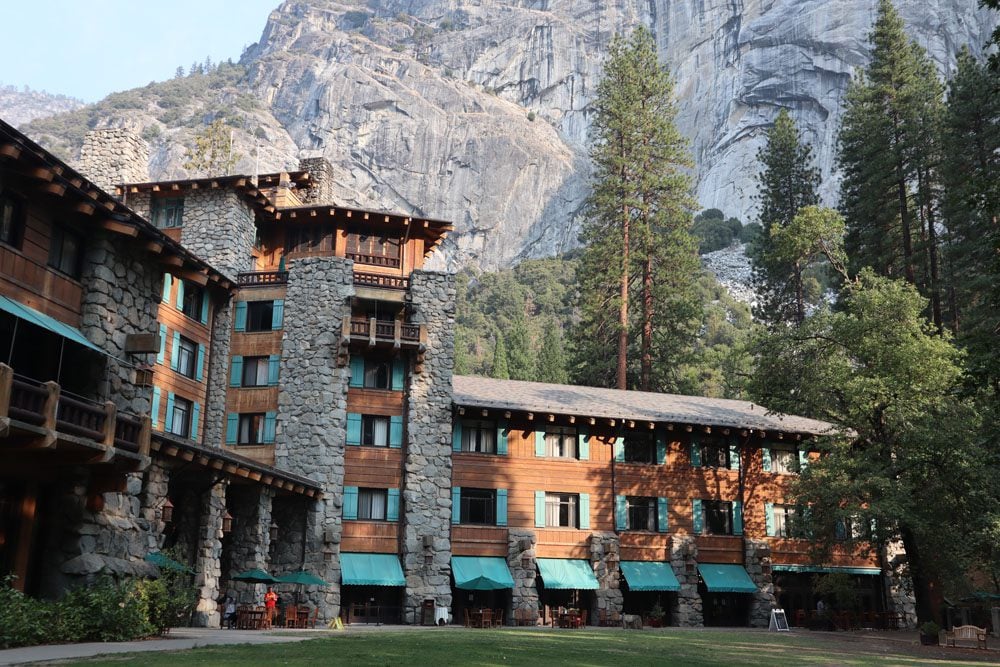

Sentinel & Cook’s Meadows
Yosemite Valley’s meadows take up the lush flat ground at its center. They provide wildlife with water and food, and visitors with an opportunity to escape the crowds and enjoy a unique vantage point of some of the valley’s crown jewels. A short and easy trail loops around Cook’s Meadow and Sentinel Meadow. Do all or part of the trail and keep your eyes peeled for wildlife.
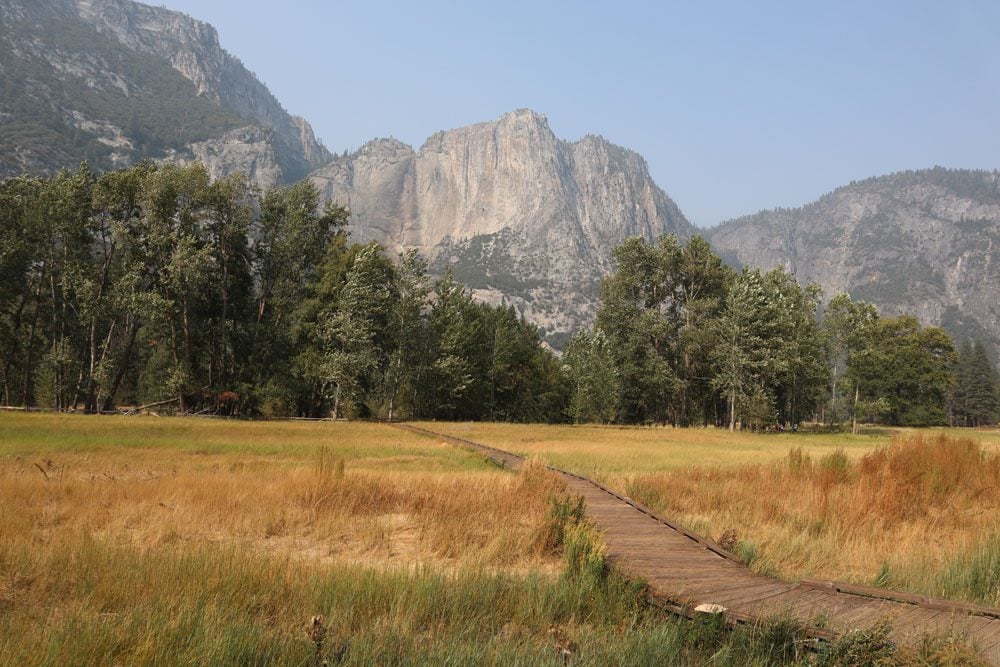
Yosemite Falls
Known in some circles as the “tallest waterfall in North America”, Yosemite Falls is actually made up of two waterfalls, Upper Yosemite Fall and Lower Yosemite Fall, which together with what’s known as “the middle cascade” give Yosemite Falls a combined height of 2,425 feet (739 m).
Yosemite Falls is one of the park’s top highlights, best experienced during late spring and early summer when the snowmelt creates a serious flow. Come late summer, there is little left to see but giant boulders. If the waterfall is active, take the easy paved trail to the base of Lower Yosemite Falls.
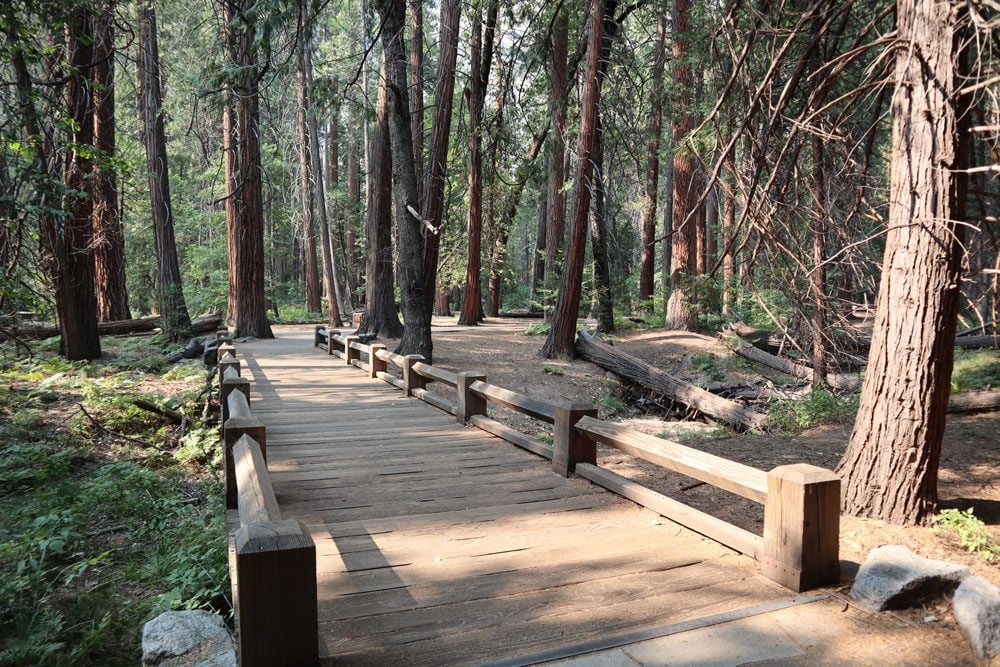
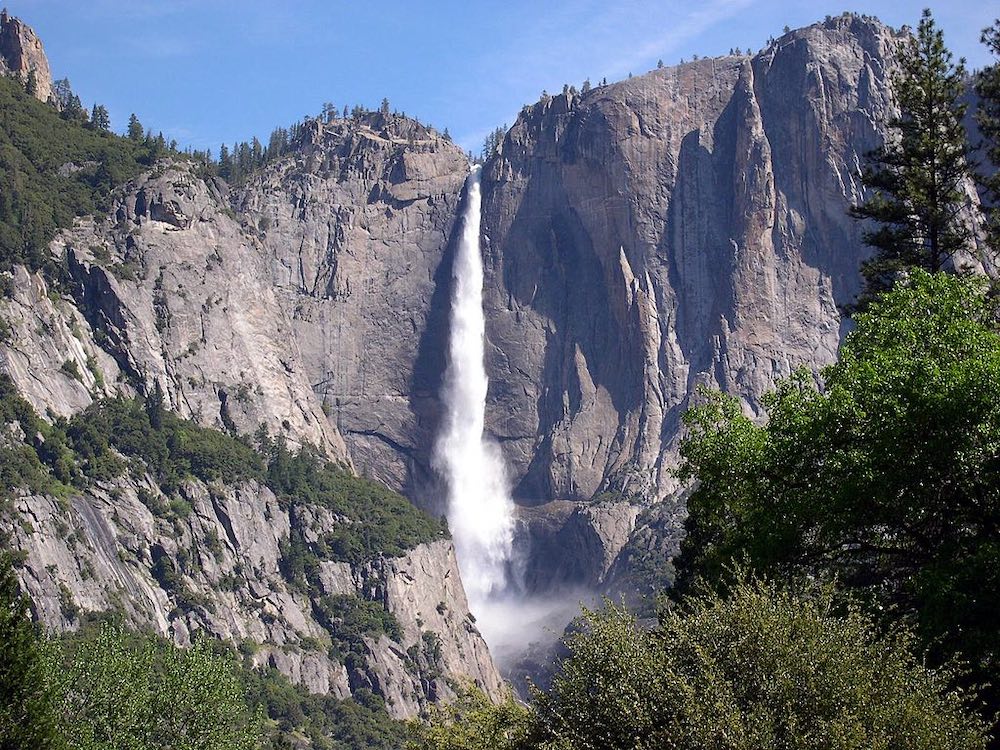
El Capitan
Rising almost vertically to a height of 3,593 feet (1,095 m), El Capitan is one of Yosemite’s iconic granite monoliths. Rock climbers attempt this incomprehensible challenge during the warmer months but “ordinary” visitors need to strain their necks to admire El Capitan from the valley floor. The best spots to see El Capitan from Yosemite Valley are in the section of Northside Drive between the El Capitan Picnic Area and the Hanging Valley Viewpoint.
It is possible to hike to the summit of El Capitan from Yosemite Valley. See tomorrow’s itinerary for more details.
Hanging Valley Viewpoint
This spot captures Bridalveil Fall and the Merced River in a single frame. It’s best to come here in the afternoon when the sun is high in the sky or has already well-transitioned west.
Yosemite Valley View
Many pictures you see of Yosemite Valley were taken at or around Yosemite Valley View (simply known as Valley View). On a calm day with little wind, the valley’s grandeur is reflected on the surface of the calm water.
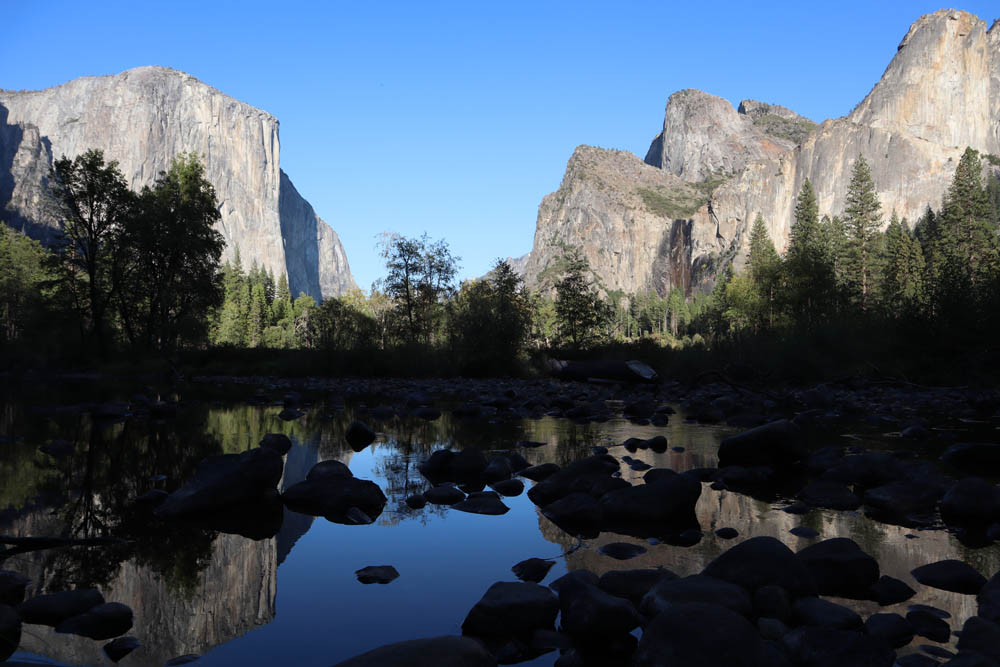
Bridalveil Fall
The native Ahwahneechee called this area pohono, meaning “spirit of the puffing wind” and European-Americans named it Bridalveil Fall because of the veil-like effect when the wind tosses the water in the air. Together with Yosemite Falls, Bridalveil Fall is one of Yosemite Valley’s two impossibly scenic waterfalls, splashing from a height equal to a 62-story building (620 feet | 189 m).
Stop at Bridalveil Falls Viewpoint to catch your first view of the waterfall and then take the short trail to inspect it from up close. Keep in mind that the waterfall is usually very dry and practically non-existing in the late summer and early fall months.
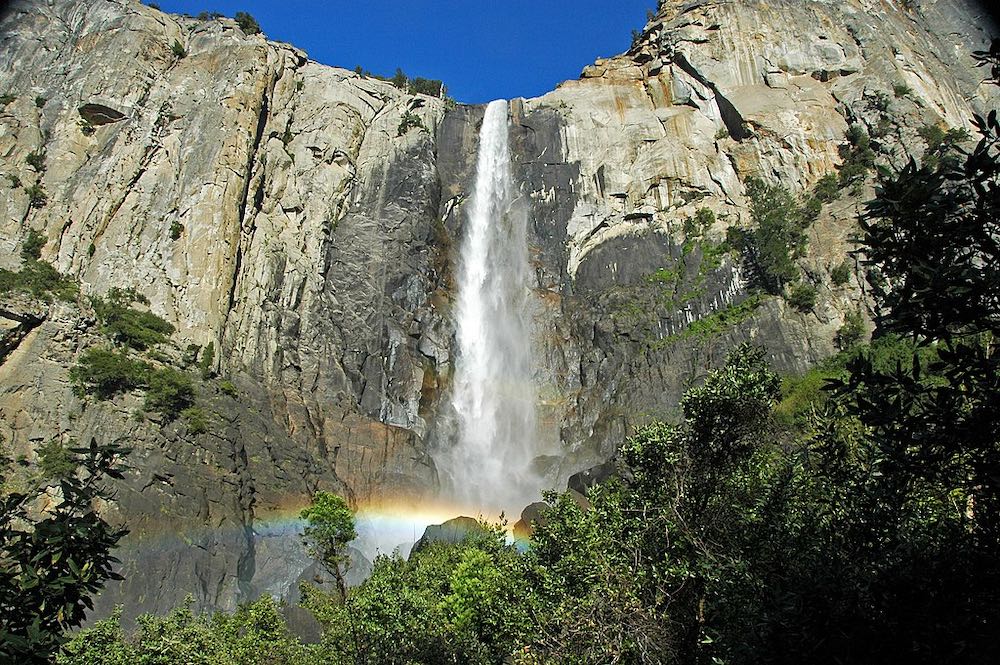
Optional Stop at Sentinel Bridge
If you’re doing well on time, check out the view of Yosemite Valley from Sentinel Bridge. The bridges that cross the Merced River offer almost unobstructed views of the valley. Other nearby options include the Berg Bridge and the Swinging Bridge. You can also use the opportunity and walk to the bank of the river at the sandy Sentinel Beach.
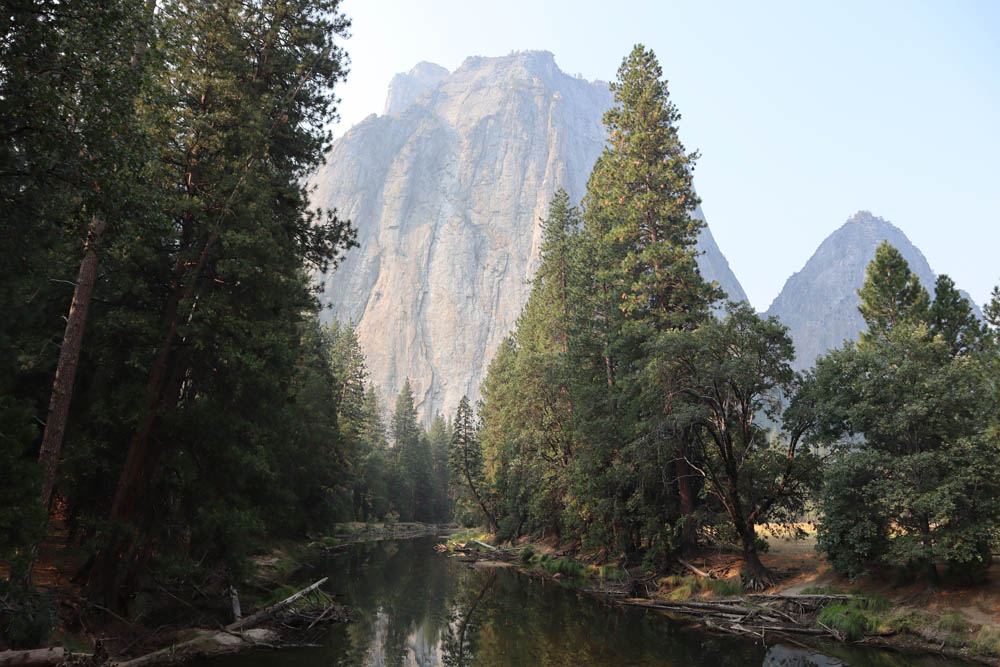
Tunnel View
From Bridalveil Fall or the scenic bridges, use the valley’s one-way road system or shuttles to reach our last stop of the day. Together with Yosemite Valley View, Tunnel View provides a perfect vista of Yosemite Valley. Due to its position and elevation, the best time to visit Tunnel View is during the late afternoon or just before sunset.
